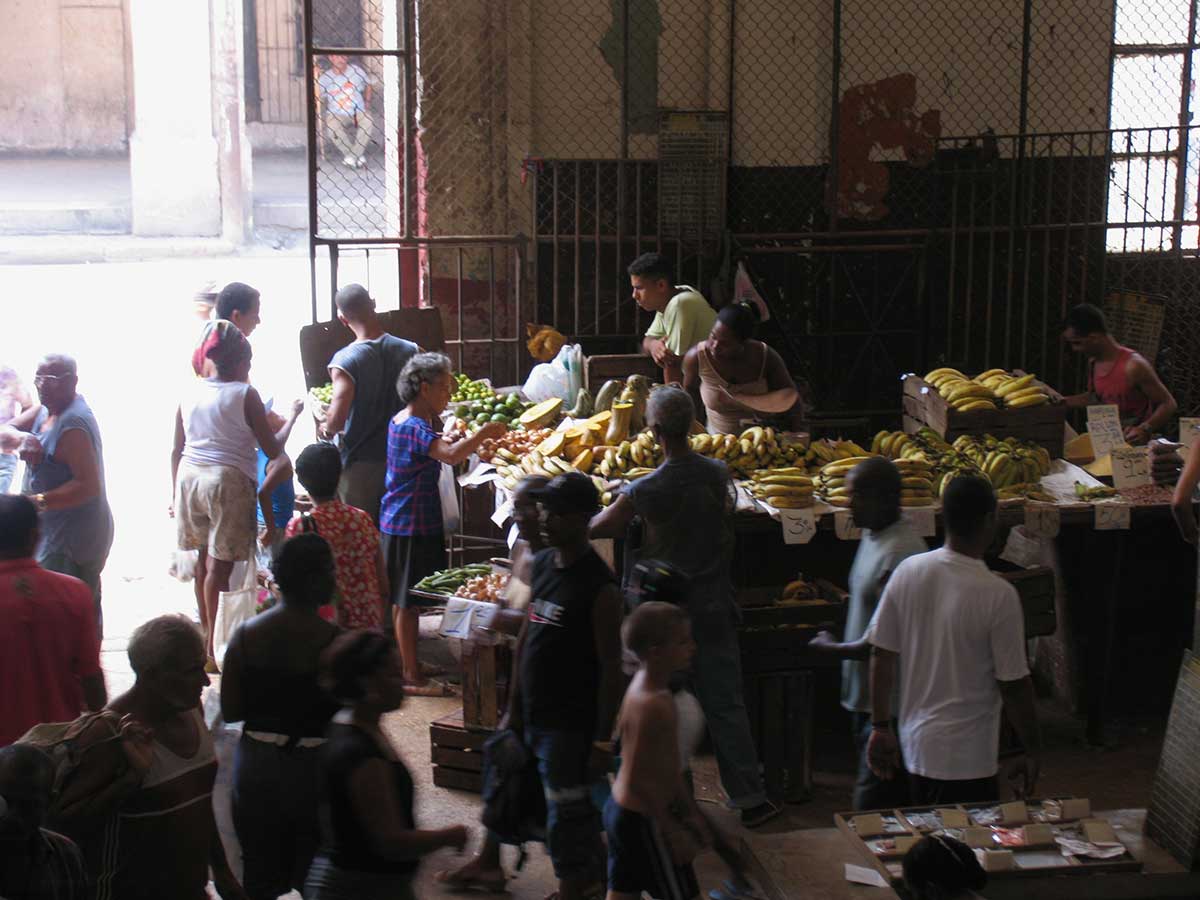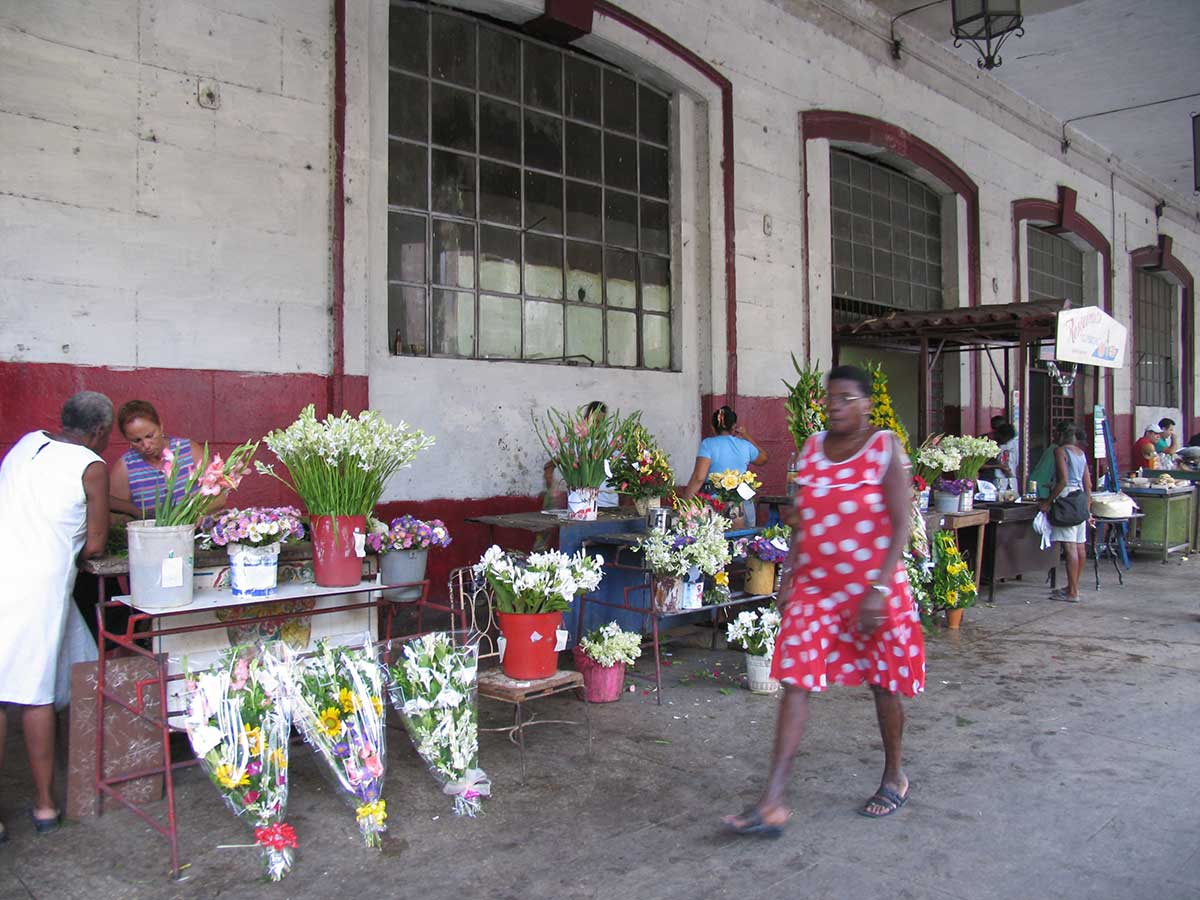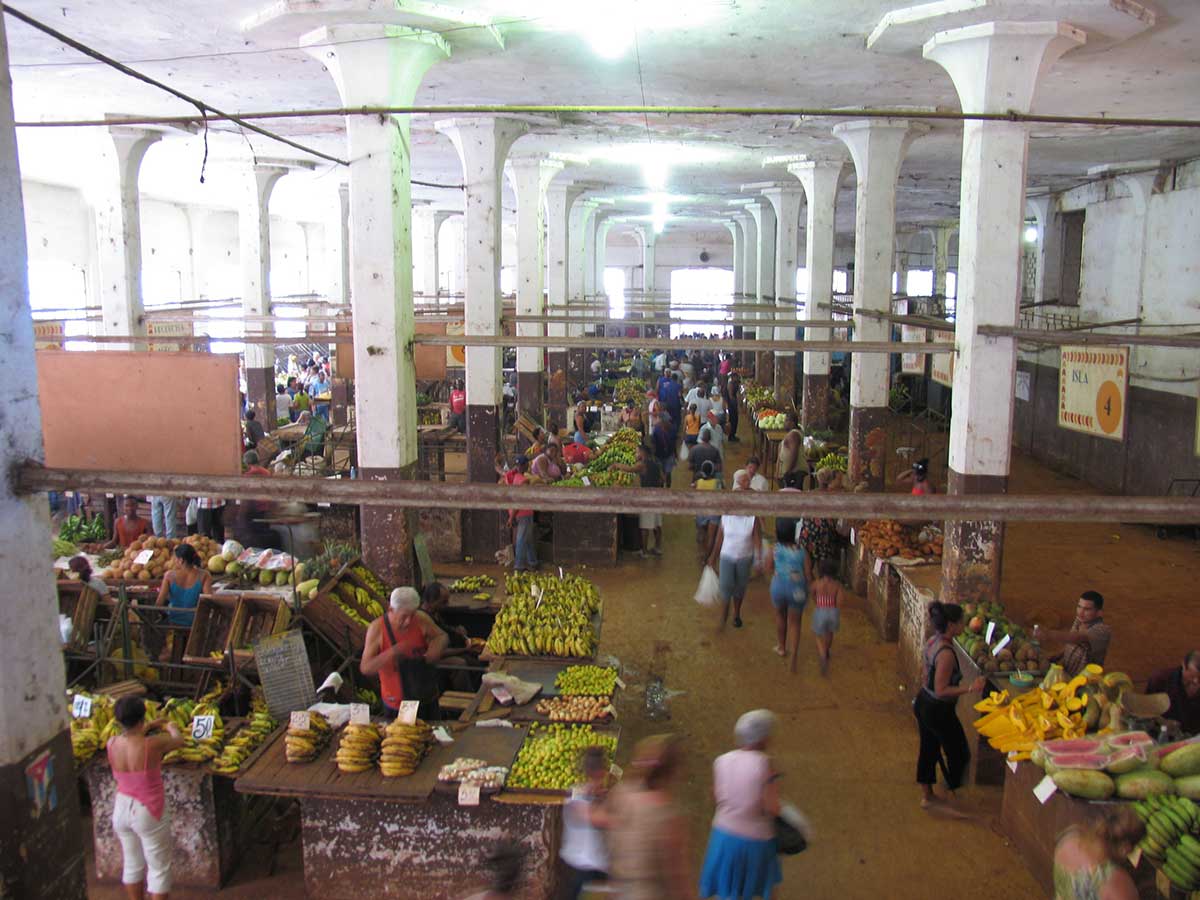Located on Monte and Arroyo Streets, this giant, indoor market was famous prior to the Revolution of 1959 for housing the most diverse and succulent of agricultural products as well as many vendors’ food stalls. Although most of the farm stands were still empty in 2005, the array of produce at each one was still a novelty. During the 1990s, one was often lucky to find farmers selling the same two or three crops, such as green beans, tiny onions (picked before they ready in order to fill demand and make money as quickly as possible) and potatoes. For cooks like myself, having access to virtually all the ingredients one needed for a traditional Cuban dish (including both cilantro and culantro!) was a unique experience on the island, although one for which few Cubans could afford to pay. Nonetheless, one of the most exciting products to appear in agros across Havana were flowers and flower bouquets: after a decade of researching and living in Cuba, the only place I had ever seen them sold was near the monumental and historic Cementerio Colón, close to the famous intersection of 12th and 23rd where Cuba’s art galleries and ICAIC, the government film industry, also reside. The fabulously fragrant white flowers called mariposas (another Asian import from colonial days) had long been endemic to the central highlands of El Escambray. Tucking tiny, thin strips of encoded messages into the mariposas’ tube-like interior and decorating their hair with them, female spies of Cuba’s three independence wars against Spain had famously carried correspondence and orders to rebels in the field across long distances. Until I saw these flowers at Cuatro Caminos in 2005, I had only seen (and smelled) them growing in the mountains.


